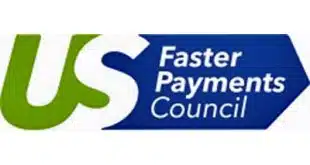Financial institutions have been battling fast-growing fintechs and other nonbanks for payments share and revenue for years, but now new research indicates banks, which have historically controlled this crucial business, are on the cusp of slipping from that dominant perch.
In 2017, U.S. banks’ total payments revenue netted out to $163 billion, with nonbanks claiming revenue of $136 billion, according to the research released recently by Accenture Payments. That already meant nonbanks ranging from the likes of Apple Pay, PayPal, and Square to less well-known players claimed a 45% share of revenue last year.

But by 2020, the research projects the nonbank share will rise to $177 billion versus $167 billion for banks, tipping the balance in favor of nonbanks for the first time as they claim a 51% share. The change in nonbanks’ favor will come about over the next two years as banks gain $15 billion in revenue but lose nearly $12 billion to pricing pressure and business lost to what Accenture calls “new players.”
Nonbanks will sustain pricing pressure as well, which will exact a $27 billion toll. But they will reap enough new business—$69 billion worth—to more than offset the leakage to lower pricing, Accenture forecasts.
“Our analysis indicates that incremental revenues are projected to accrue primarily to nonbanks over the next few years,” says Frank Martien, managing director for payments at Accenture and author of the study, in a blog post about the research. “The beneficiaries include players already in the value chain (those less exposed to customer demands, such as rewards, and with more direct access to key platform levers, like processing) and new forms of fintech, [big technology companies], and other third parties phasing into the market.”
The change, though projected over a mere three years, can still seem gradual enough to lull bankers into a sense of complacency, Martien warns, particularly as many nonbank players are only now emerging as major factors in the market long after their launch. “As evidenced by Apple Pay, it can take years for new, disruptive platforms to scale,” he says in the post. “For those who are unprepared, gradual pricing pressure and value leakage may begin to erode many existing business models.”
Accenture recognizes that at least some major financial institutions have moved to thwart the nonbank challenge, but wonders whether they are doing enough and acting with enough urgency, especially when it comes to new technology.
“Incumbents have already begun moving to protect their revenue base by introducing innovative solutions, such as [the peer-to-peer payments network] Zelle,” says Martien’s post. “Going forward, technology deployment needs to happen faster with more agile adoption and monetization of technologies, such as data analytics, blockchain, and [artificial intelligence]/machine learning.”





